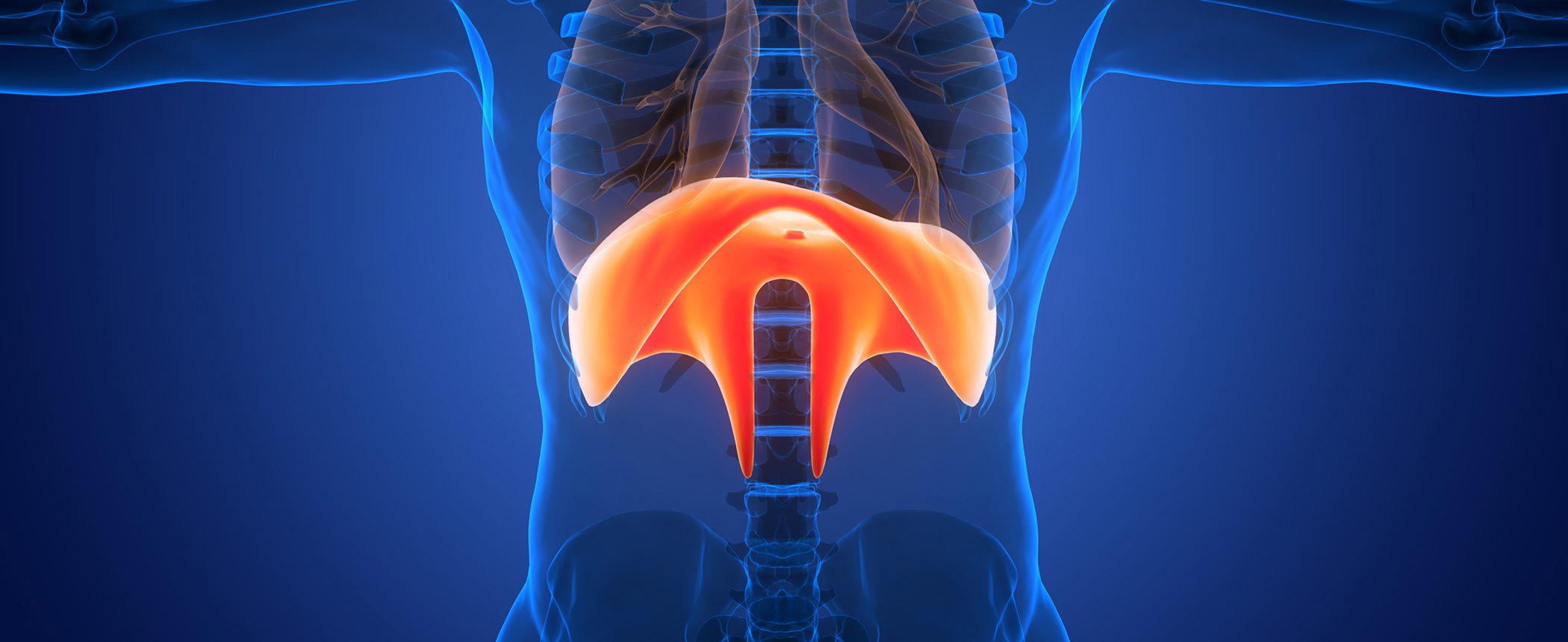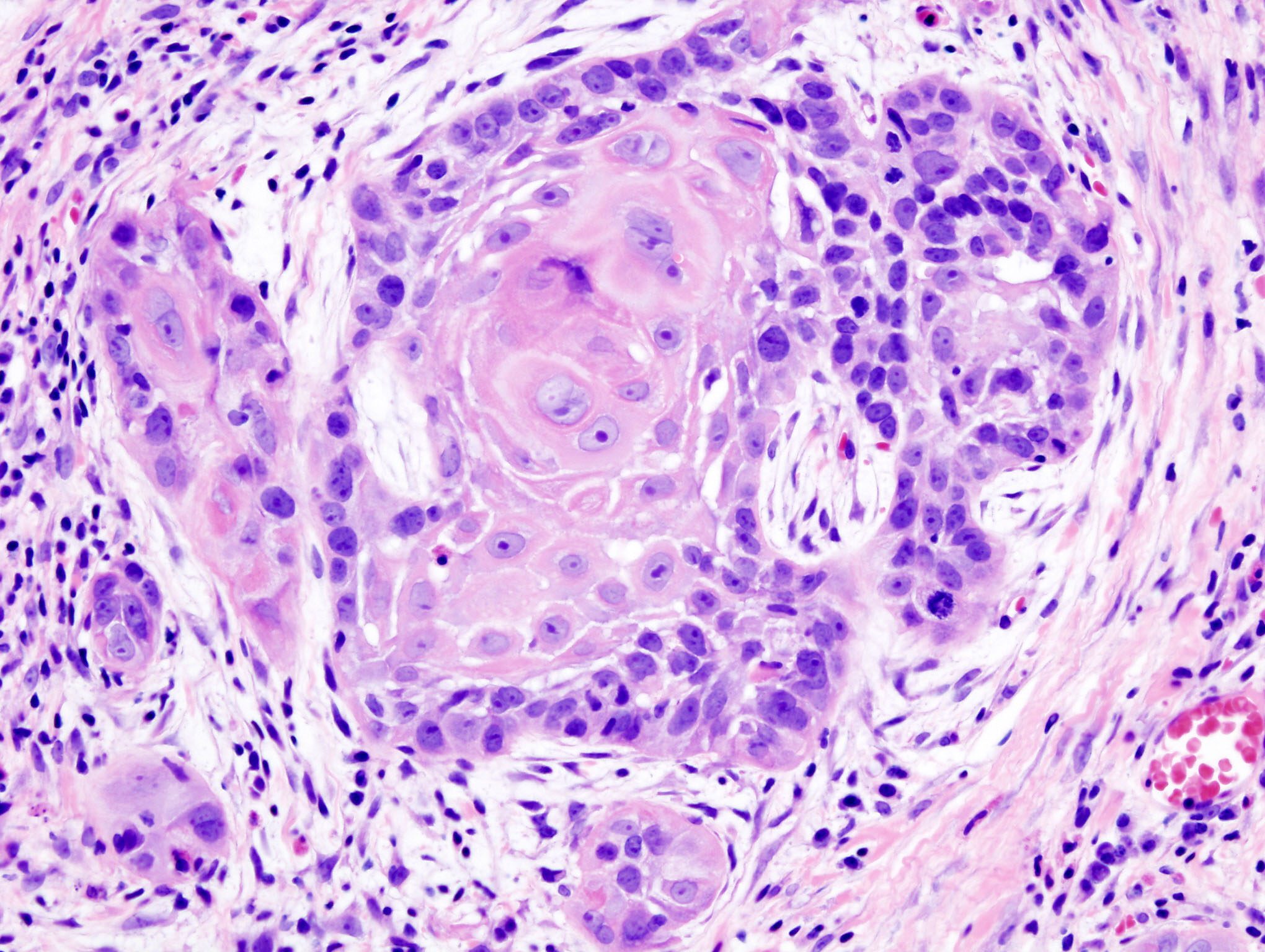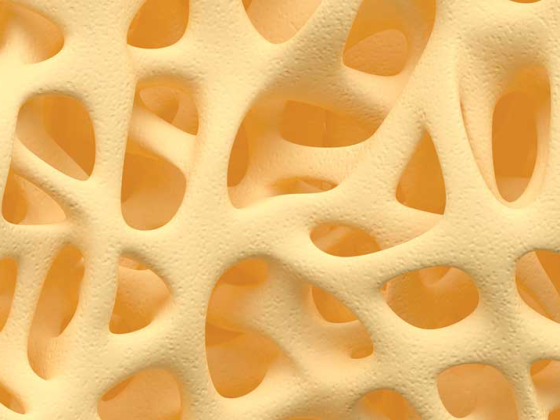In the chronic course of aortic regurgitation and aortic stenosis, remodeling of the left ventricle occurs, leading to myocardial hypertrophy and fibrosis. Several studies have shown that extracellular volume fraction and indexed extracellular volume are important surrogate markers for diffuse myocardial fibrosis. However, postoperative data on these extracellular expansion parameters of cardiovascular magnetic resonance for aortic stenosis or aortic regurgitation are scarce.
During the chronic course of aortic valve disease (VHD), progressive remodeling of the left ventricle occurs. Aortic stenosis (AS) causes left ventricular (LV) pressure overload, [2] while aortic regurgitation (AR) causes pressure and volume overload, [3,4] which activates different intracellular signaling pathways [5-7] and leads to different patterns of myocyte hypertrophy and fibrosis [8]. Myocardial fibrosis (MF) was previously quantified histopathologically [9–11]. More recently, cardiovascular magnetic resonance (CMR) imaging with late gadolinium enhancement (LGE) sequences has enabled noninvasive detection and quantification of regional replacement fibrosis [12,13]. Over the past decade, several studies have demonstrated the importance of quantifying extracellular volume fraction (ECV) and indexed extracellular volume (iECV) as surrogate markers of diffuse MF in patients with VHD, including the clinical prognostic significance of these measures when assessed preoperatively [14–16].
In contrast to a reasonable number of studies on AS, data on extracellular expansion parameters of CMR in AR are sparse and until recently included only a very limited number of patients [17,18]. In a study published in 2021 on diffuse MF in patients with AR, most patients had predominantly mild to moderate AR, and only 28% of patients underwent surgery. Furthermore, CMR data were limited to the preoperative period. To date, postoperative CMR parameters for diffuse fibrosis are limited (for AS) [19,20] or absent (for AR), so postoperative changes in AR and the results of comparisons between the two groups after surgery are unclear. In addition, it is not yet known whether postoperative fibrosis affects long-term prognosis. Better knowledge of myocardial structure and postoperative changes could lead to the development of better treatment goals and more accurate definition of the timing for intervention.
Therefore, the aim of a recent study was to demonstrate pre- and postoperative changes in regional and diffuse MF in patients with AR or AS. Furthermore, the possible influence of preoperative MF on the reversal of LV hypertrophy after surgery was investigated. Considering the differences in LV remodeling patterns in both diseases, a comparative analysis was performed between the two groups [1].
179 patients were screened for possible inclusion in the study
After applying the inclusion and exclusion criteria, 111 of them were included. 12 patients were excluded, whereas 99 (32 with AR, 67 with AS) remained for analysis. Patients with AR were younger (AR: 57 vs. AS: 65 years, p=0.001) and had a greater proportion of men, a lower prevalence of diabetes mellitus or angina, and a lower STS (Society of Thoracic Surgeons) score. In addition, AR patients took more vasodilator medications and beta-blockers while awaiting surgery and were more often considered for surgery even though they were asymptomatic.
Preoperative cardiovascular magnetic resonance data.
Patients with AR had eccentric LV remodeling, and in 37.5% of cases, LV FE <was 50%. Indexed mass and volumes were greater in patients with AR than in those with AS (indexed mass: 110 vs. 86 g/m2; indexed diastolic volume: 153 vs. 71 mL/m2, indexed systolic volume: 75 vs. 24 mL/m2; all p≤0.001). Cardiovascular magnetic resonance regurgitation volume (65 mL) and regurgitation fraction (50%) indicated that the patients had severe AR [21]. Similarly, CMR aortic valve area (0.7 cm2) and peak gradient (69 mmHg) correlated well with echocardiographic measurements and were consistent with severe AS [22,23]. Absolute (AR: 3.8 g vs. AS: 3.4 g, p=0.586) and proportional (AR: 1.9% vs. AS: 2.5%, p=0.463) amounts of LGE were similar in both groups, with predominantly non-ischemic patterns (AR vs. AS: 90% vs. 82%; p=1.000). Extracellular volume fraction and iECV were significantly higher in patients with AR (Fig. 1) [1].
Postoperative cardiovascular magnetic resonance data.
Five patients with AS did not undergo postoperative CMR: two died within 30 days of surgery due to refractory cardiogenic and septic shock, one was diagnosed with metastatic colorectal cancer during treatment for early prosthetic infective endocarditis and died of cancer progression 3 months after surgery, and two patients had CMR-incompatible pacemakers implanted 55 and 117 days after surgery. In all other patients, LV hypertrophy regressed, with patients with AR having lower indexed LV mass and volume postoperatively (indexed mass: 110 vs. 91 g/m2; indexed end-diastolic volume: 153 vs. 95 mL/m2; indexed end-systolic volume: 75 vs. 42 mL/m2; all p<0.001) and lower postoperative indexed LV mass and indexed end-diastolic volume in the patients with AS (indexed mass: 86 vs. 68 g/m2, p<0.001; indexed end-diastolic volume: 71 vs. 66 mL/m2, p=0.002). In addition, there was a decrease in indicated cell mass in both groups (AR: preoperative 79.8 vs. postoperative 65.3 g/m2, p<0.001; AS: preoperative 61.0 vs. postoperative 48.5 g/m2, p<0.001).
In the AR group, there was no difference between pre- and postoperative absolute (3.8 g vs. 2.5 g, p=0.635) or proportional (1.9% vs. 1.7%, p=0.575) LGE amounts. There was a decrease in iECV (preoperative: 30.0 mL/m2 vs. postoperative: 26.5 mL/m2, p<0.001) and ECV measurements stabilized (all p>0.60). In the AS group, ECV measurements increased postoperatively (all p<0.05), with a concomitant decrease in postoperative iECV (preoperative: 22.0 mL/m2 vs. postoperative: 18.2 mL/m2, p<0.001). Absolute (preoperative: 3.4 g vs. postoperative: 3.5 g, p=0.575) and proportional (preoperative: 2.4% vs. postoperative: 2.4%, p=0.615) LGE volumes stabilized while maintaining the predominantly non-ischemic pattern (AR vs. AS: 85.7% vs. 77.8%, p=0.692). When comparing the AR and AS groups, no differences in ECV were found after surgery (all p>0.50), as ECV measurements increased in the AS group. In contrast, iECV remained higher in patients with AR in postoperative CMR (AR vs. AS: 26.5 vs. 18.2 mL/m2; p<0.001) (Fig. 1) [1].
Correlations with myocardial fibrosis measurements.
In both valvulopathies, there was a correlation between baseline iECV and male sex (AR: r=0.500, p=0.004; AS: r=0.444, p<0.001). In the AR group, preoperative iECV correlated with regurgitant volume (r=0.589, p<0.001) and with all other LV structural parameters analyzed, including a negative correlation with LV EF (r=-0.450, p=0.021). The presence of LGE and iECV correlated with greater postoperative indexed LV mass (LGE: r=0.581, p<0.001; iECV: r=0.789, p<0.001), while all preoperative fibrosis measurements analyzed correlated with greater postoperative iECV (LGE: r=0.577,
p=0.001; ECV: r=0.546, p=0.001; iECV: r=0.839, p<0.001). Among biomarkers, the presence of LGE correlated with pre- and postoperative troponin I (preoperative: r=0.620, p<0.001; postoperative: r=0.511, p=0.003), and iECV correlated with preoperative troponin I (r=0.616, p<0.001) and BNP (r=0.548, p=0.001).
In the AS group, there was a more frequent correlation between fibrosis measurements and LV structural parameters. Specifically, iECV correlated with both pre- and postoperative indexed mass (pre: r=0.916, p<0.001; post: r=0.742, p<0.001) and with preoperative troponin I levels (r=0.547, p<0.001). Postoperative BNP levels did not correlate with preoperative fibrosis measurements in either patient group.
Predictors of postoperative decrease in indexed extracellular volume.
When analyzing the decrease in iECV after surgery, several variables showed predictive value in AR and AS in linear regression analysis. In the AR group, the univariable predictors of a decrease in iECV were LV echocardiographic volumes and diastolic diameter, CMR-LV septum, lateral wall, indexed volumes, LGE mass and fraction, ECV mass, baseline BNP and prosthetic size, and low CMR-LV EF. In the AS group, the positive predictors in univariable analysis were male sex, echocardiographic LV end-systolic volume and systolic diameter, indexed CMR LV volumes, ECV mass (except septal ECV with LGE), baseline BNP, and prosthetic size, whereas the negative predictors were age, baseline functional class, echocardiographic and CMR-LV EF, and LGE mass and fraction.
Multivariable regression analysis revealed that CMR-indexed mass and septal ECV without LGE in the AR group and echocardiographic LV EF and CMR-iECV in the AS group were independent predictors of the decrease in iECV.
Predictors of reverse left ventricular remodeling.
Including all patients, nested models showed both LV mass index and global ECV without LGE as independent predictors of LV reverse remodeling (LV mass index p<0.001, global ECV without LGE p=0.039, p=1.000 for interaction), with similar results using global ECV with LGE. When only the group of patients with AR was included, only LV mass index remained as a predictor (LV mass index p<0.001, global ECV without LGE p=0.415).
Of 94 patients who underwent postoperative CMR, 12 patients (five with AR and seven with AS) had negative LV remodeling. A higher preoperative iECV value was associated with a lower probability of developing negative LV remodeling (beta 0.911, 95% CI 0.836-0.993, p=0.034). When patient groups were analyzed separately in univariable linear regression, predictors of negative LV remodeling in patients with AR were iECV, presence of LGE, regurgitant volume, and regurgitant fraction. In the AS group, the positive predictors were male sex, iECV, septal ECV without LGE, and global ECV without LGE, whereas the negative predictors were age, hypertension, CMR LV EF, and LGE fraction.
Take-Home Messages
- Patients with AR have higher ECV and iECV preoperatively than patients with AS.
- After surgery, patients with AR and AS show iECV regression and LGE stability, but unlike patients with AS, those with AR do not show a significant increase in ECV.
- iECV is the CMR fibrosis parameter that correlates better with LV structural parameters and biomarkers in both valvulopathies.
Literature:
- Pires LT, et al: Postoperative myocardial fibrosis assessment in aortic valvular heart diseases – a cardiovascular magnetic resonance study. Eur Heart J 2023; https://doi.org/10.1093/ehjci/jead041.
- Dweck MR, et al: Left ventricular remodeling and hypertrophy in patients with aortic stenosis: insights from cardiovascular magnetic resonance. J Cardiovasc Magn Reson 2012; 14: 50.
- Carabello BA: Aortic regurgitation. A lesion with similarities to both aortic stenosis and mitral regurgitation. Circulation 1990; 82: 1051-1053.
- Bekeredjian R, Grayburn PA: Valvular heart disease: aortic regurgitation. Circulation 2005; 112: 125-134.
- Olsen NT, et al: Hypertrophy signaling pathways in experimental chronic aortic regurgitation. J Cardiovasc Transl Res 2013; 6: 852-860.
- Truter SL, et al: Fibronectin gene expression in aortic regurgitation: relative roles of mitogen-activated protein kinases. Cardiology 2009; 113: 291-298.
- Borer JS, et al: Myocardial fibrosis in chronic aortic regurgitation: molecular and cellular responses to volume overload. Circulation 2002; 105:1837-42.
- Heymans S, et al: Increased cardiac expression of tissue inhibitor of metalloproteinase-1 and tissue inhibitor of metalloproteinase-2 is related to cardiac fibrosis and dysfunction in the chronic pressure-overloaded human heart. Circulation 2005; 112: 1136-1144.
- Krayenbuehl HP, et al: Left ventricular myocardial structure in aortic valve disease before, intermediate, and late after aortic valve replacement. Circulation 1989; 79: 744-755.
- Oldershaw PJ, et al: Correlations of fibrosis in endomyocardial biopsies from patients with aortic valve disease. Br Heart J 1980; 44: 609-611.
- Schoen FJ, Lawrie GM, Titus JL: Left ventricular cellular hypertrophy in pressure- and volume-overload valvular heart disease. Hum Pathol 1984; 15: 860-865.
- Azevedo CF, et al: Prognostic significance of myocardial fibrosis quantification by histopathology and magnetic resonance imaging in patients with severe aortic valve disease. J Am Coll Cardiol 2010; 56: 278-287.
- Nigri M, et al: Contrast-enhanced magnetic resonance imaging identifies focal regions of intramyocardial fibrosis in patients with severe aortic valve disease: correlation with quantitative histopathology. Am Heart J 2009; 157: 361-368.
- Podlesnikar T, Delgado V, Bax JJ: Cardiovascular magnetic resonance imaging to assess myocardial fibrosis in valvular heart disease. Int J Cardiovasc Imaging 2018; 34: 97-112.
- Everett RJ, et al: Extracellular myocardial volume in patients with aortic stenosis. J Am Coll Cardiol 2020; 75: 304-316.
- Senapati A, et al: Regional replacement and diffuse interstitial fibrosis in aortic regurgitation: prognostic implications from cardiac magnetic resonance. J Am Coll Cardiol Img 2021; 14: 2170-2182.
- Sparrow P, et al: Myocardial T1 mapping for detection of left ventricular myocardial fibrosis in chronic aortic regurgitation: pilot study. AJR Am J Roentgenol 2006; 187: W630-635.
- de Meester de Ravenstein C, et al: Histological validation of measurement of diffuse interstitial myocardial fibrosis by myocardial extravascular volume fraction from modified look-locker imaging (MOLLI) T1 mapping at 3 T. J Cardiovasc Magn Reson 2015; 17: 48.
- Everett RJ, et al: Progression of hypertrophy and myocardial fibrosis in aortic stenosis: A multicenter cardiac magnetic resonance study. Circ Cardiovasc Imaging 2018; 11: e007451.
- Treibel TA, et al: Reverse myocardial remodeling following valve replacement in patients with aortic stenosis. J Am Coll Cardiol 2018; 71: 860-871.
- Guglielmo M, et al: The role of cardiac magnetic resonance in aortic stenosis and regurgitation. J Cardiovasc Dev Dis 2022; 9: 108.
- Bohbot Y, et al: Usefulness of cardiac magnetic resonance imaging in aortic stenosis. Circ Cardiovasc Imaging 2020; 13: e010356.
- Garcia J, et al: Comparison between cardiovascular magnetic resonance and transthoracic Doppler echocardiography for the estimation of effective orifice area in aortic stenosis. J Cardiovasc Magn Reson 2011; 13: 25.
CARDIOVASC 2023; 22(3): 37-39













